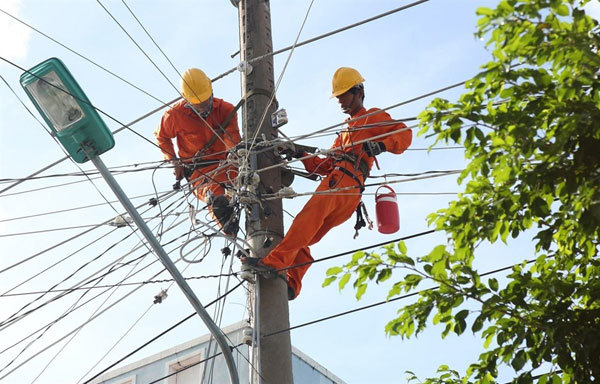Electricity price rise to hamper manufacturing operations: experts
Electricity prices rise 8.36% to cover production cost
Electricity hike hits industry hard
 |
| On March 20, the Ministry of Industry and Trade made public its decision to increase the electric tariff 8.36 per cent. — VNA/VNS |
Do you think the electric tariffs levied by the Ministry of Industry and Trade (MoIT) are irrational?
On March 20, the Ministry of Industry and Trade made public its decision to increase the electric tariff 8.36 per cent. Many households were shocked when they received an electricity bill which increased from 1.5-2 times.
The weather in March was very hot. So no doubt, the electricity bills of all families skyrocketed.
The reasons the EVN gave for the increase in electricity tariffs were reasonable, but no fully comprehensive. The EVN electric tariff table is not fair between the electric consumers and the EVN. To many people, the tariff is in favour of the EVN while consumers are placed in a disadvantaged position. That’s why, in my opinion, the EVN should review its electricity tariff.
Principally speaking, the Government only makes the decision on the average tariff for a KWh and based on that the MoIT will then come up with the retail price for household consumption.
However, such an electric tariff for household consumption must ensure the following objectives, namely to hold high the principle of social security and take into account conditions of low income people, and to encourage the consumers to use electricity rationally as the input of electricity is fossil fuels which is limited and coal-fired electricity is very harmful to the environment.
To meet these objectives, the MoIT has developed an electricity tariff table with six scales.
An average Vietnamese family often has four members – father, mother and two children, and their electricity consumption in a month is 201-300 kWh. In reality, many Vietnamese households use more than 300 kWh/month. So with such an electric tariff, the total retail revenue that the EVN will receive in a month will be much bigger than the average retail revenue that the Government has regulated. As result, the EVN will benefit a lot from such retail revenue and the consumers then will be the losers in the game.
Statistically speaking, if there is only two scales in the electricity tariff, i.e. from 0-100 kWh, the retail price is lower than the average price from 7-10 per cent. Furthermore the total electricity consumption in these two scales is too small compared with the total electricity consumption in the remaining four scales.
Adding to that, the price set for these four scales is very high compared to the first two scales – from 8.2 to nearly 57 per cent, while the electricity consumption in the last four scales is much higher than the first two scales.
How should the electricity tariff be calculated?
In my opinion, the price scale, particularly in the scale 4, 5 and 6 is so high compared with the average retail electricity price of VND1,864.44 per kWh and the EVN benefits the most. That’s why, in my opinion, the electricity tariffs should be reconsidered.
I totally agree that we need to develop a system of accumulative price in calculating the electricity tariff. Yet, we also need to discuss on what scale it should be to make it tally with the tariff that the Government has already decided.
Is the setting of the electricity tariff conducted with transparency and accountability?
We should differentiate the two concepts of transparency and accountability. Transparency means to make the information public. Meanwhile, accountability means the information made public is the truth – the reflection of the real production cost.
In my opinion, all financial activities of the EVN have been announced publically. Yet whether we have accountability or not, we should wait for functional agencies to do their duty and then make their final decision.
VNS
 Expert Ngo Tri Long, former head of the Price and Market Research Institute under the Ministry of Finance, talks to Vietnam News Agency on the key elements in setting electricity tariffs.
Expert Ngo Tri Long, former head of the Price and Market Research Institute under the Ministry of Finance, talks to Vietnam News Agency on the key elements in setting electricity tariffs.